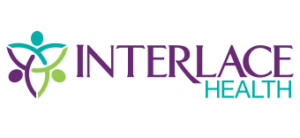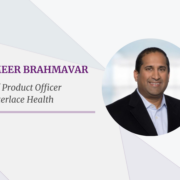As the healthcare industry continues to evolve, the need for paradigm-shifting solutions becomes increasingly necessary. Leveraging technology and embracing new care delivery models, such as acute in-home care, are key factors in addressing the challenges faced by healthcare organizations.
Last month, I had the opportunity to join my colleague, Dessiree Paoli, as we hosted a webinar: Health IT in 2023 — Mid-Year Market Insights, to share insights and discussions from several of this year’s major healthcare conferences, such as ViVE and HIMSS. The webinar shed light on the potential of technology-driven transformation and the growing importance of emerging hospital-at-home care models. In this blog, I took the opportunity to further explore these timely topics that have the power to untap the potential of technology-driven transformation and the growing importance of emerging hospital-at-home care models.
Digital Transformation and Redefining Hospital Processes:
Digital technologies should not be seen as mere replacements for outdated processes but as tools to redefine and improve the care continuum. The focus should be on leveraging the novel capabilities of emerging technologies to redefine new processes. The future of care delivery is expected to move away from traditional hospital settings, opening possibilities to bring care to where patients are rather than into the walls of the hospital.
Transformation leaders emphasized that Change management is essential when implementing digital transformation in healthcare. Involving healthcare providers in the evaluation and sale of digital solutions, standardizing processes, and leveraging the existing electronic health records (EHR) infrastructure can enhance the adoption and impact of digital technologies. If a digital technology doesn’t improve access to care or the patient experience, then the hospital is unlikely to see a true return on their digital investment.
The Rise of Hospital-at-Home:
Hospital-at-Home (HaH) is a new level of care that challenges traditional definitions and names associated with home health and home care. The majority of healthcare actions already occur in the home, and HaH aims to provide hospital-level care in a patient’s own residence. This shift in care delivery has the potential to prevent unnecessary hospitalizations, improve nurse-to-patient ratios, and create new streams of revenue. CMS has already seen over 200 hospitals successfully apply for the Acute Hospital Care a Home (AHCaH) waiver, while commercial payers are quickly seeing the benefit of negotiating HaH contracts with their network of providers.
HaH offers a range of benefits, including improved access to care, better provider experience, and cost-effective care delivery. However, implementing HaH programs come with its own set of challenges. Logistics, such as ensuring devices stay charged throughout the day, and standardizing processes while maintaining personal connections with patients, are critical hurdles to overcome. Even simple things like getting paperwork signed by patients take on a new level of complexity when the patient is no longer bound to the hospital. Hospitals exploring HaH programs also must figure out if their current partners support in-home care, what new technologies will need to be adopted, and how to staff these programs.
At its core, HaH programs are simply shifting where care is being delivered. In practice, the process of delivering that care becomes more complex for hospitals. The two clearest examples are remote patient monitoring (RPM) and clinician staffing. Hospitals must have robust RPM capabilities to monitor patients and take vitals in order to rapidly respond to changes in a patient’s condition. Since the hospital room is the patient’s home, this means the RPM tools must have reliable internet connectivity. Panelists at HIMSS and ViVE mentioned a range of methods from subsidizing home internet for patients to installing cellular wi-fi enable RPM cradles in patient’s homes to ensure the patient is connected to the health system. Staffing is also a challenge as the hospital will need to deploy nurses into the field, having physicians on hand to coordinate care and meet remotely with patients, and have the flexibility to ensure 24/7 remote monitoring with patients. Currently, individual hospital leaders are all developing their own ways to manage these processes, though we may expect some standardization to occur over time. There are also lessons to be learned from the home health market, though several HaH leaders did mention that MedSurg nurses seem to be thriving in these programs.
AI in Healthcare: Promises and Ethical Considerations:
Artificial intelligence (AI) and machine learning (ML) hold great potential in healthcare, though it may sometimes feel impossible to separate the true value from the hype. The best bit of wisdom shared during the many AI-focused sessions across HIMSS and ViVE was to look at any AI-powered product and ask how it augments or automates a given job or task? Further, ask how does AI free up people for more high-value work? Leaders should not be asking how AI tools can replace FTEs, but rather how AI tools can enable people to do more fulfilling work and, ultimately, better patient care. However, ethical considerations, biases in data inputs, and the lack of unified principles pose challenges.
Healthcare leaders must carefully evaluate AI applications, ensure transparency, and address equity issues. Healthcare AI experts were careful to note that there are a number of players in the AI space who aren’t interested in being responsible, happily selling based entirely on hype. The stunning pace of evolution in AI creates a challenge for IT and other healthcare leaders to stay on top of the practical applications of these tools.
The Second Half of 2023:
We are nearly halfway through what feels like the first real year since the initial public health emergency was declared in 2020. This year began with an entrepreneurial spirit to transform Pandemic-era learnings into innovative ways to make healthcare better for people. But there is also so much more ground to cover through the rest of the year.
Hospital-at-home is just getting started, but the energy and money pouring into this space suggests a very bright future. In the second half of the year, we will likely see a lot more noise around how commercial payers are going to engage with this new care pathway. With the ACHaH waiver extended through 2024, there is both a lot of time to figure things out and some real concerns that CMS won’t fully support these fledgling programs. We should also expect more start-ups to emerge offering platform solutions to help manage HaH programs. While innovations will surely emerge, hospitals may benefit from working with current technology partners to see how their IT solutions may be extended to support HaH, rather than going out and adding to the tech stack.
And then there is AI. It is difficult to predict where AI will be in 6 months. Many of the most sophisticated generative AI models built specifically for healthcare are well under wraps or are very young. Google’s Med-Palm 2 promises some massive leaps forward but is still only being used by a very small, select group of testers. Through the course of 2023, we will likely see the market settle somewhat as vendors offering reliable, process-improving AI-powered products emerge as early winners, with imaging, clinical documentation, and elements of the revenue cycle delivering augmentation and automation solutions with a tangible ROI.
Finally, I have to spend a moment talking about TEFCA. 2022 into early 2023 was dominated by EHRs and big HIEs pledging to participate in TEFCA. My expectation was that health systems would start engaging with the common agreement sometime in 2024. So, reading multiple announcements of major health systems committing to the program at the halfway point of the year is encouraging. Most of the systems currently announcing their participation are large, big-name systems, but a recent survey from the AHA found that 51% of hospitals plan to participate, with another 23% considering participation. I am concerned that independent hospitals are far more likely to not be familiar with TEFCA. With interoperability and data sharing being critical to the future of care delivery and improving the patient experience, hospitals that aren’t participating could find themselves at a disadvantage, looking in from the outside. And, while the door to join TEFCA is not slamming shut, non-participating hospitals may see themselves become less competitive.
The post-Pandemic world has all of us in the healthcare industry living in interesting times. The necessity to reinvent care delivery and drastically overhaul processes to boost efficiency in the face of increasing staffing challenges require leaders to be innovators and managers of change. Even more, leaders must balance excitement with pragmatism as AI-powered technologies steal headlines and fill inboxes with fascinating ideas, and more than a little snake oil. Yet we still contend with the grit in the gears of healthcare, irritating patients, clinicians, and administrative staff; and real opportunities exist to remove the grit, grease the wheels, and make healthcare a better place.
About the Author:

Christopher Link, Interlace Health’s Research and Insights Manager, has 13 years of market research and analysis work within the healthcare market. For the last 7 years, Christopher has focused on addressing market and strategic challenges for payer, provider, and healthcare IT vendor leaders. He believes that sound insights and intelligence are essential for effective decision-making and long-term success. Christopher currently resides in the Washington D.C. area with his wife and their dog.
Watch: On-Demand Webinar – Health IT in 2023: Mid-Year Market Insights

















